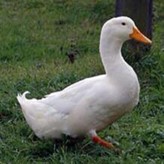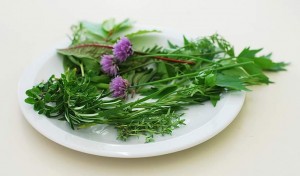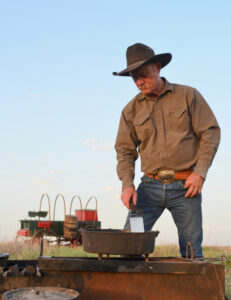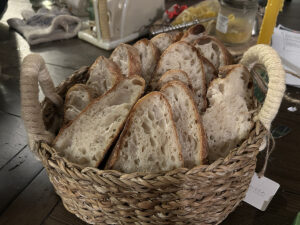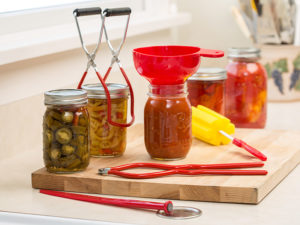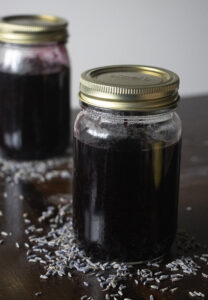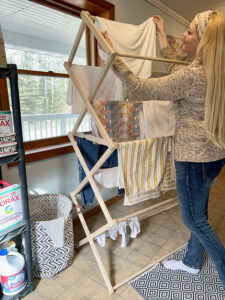Time to feed and tidy up
The air is cooler. Clouds are darker. Plants are losing their summer luster. Fall flowers are beginning to bloom. Now is the time to get ready for spring! Right?
Getting Ready
Perennial plants are always getting ready for the next season. In the spring, they are getting ready to grow and flower. In the summer, they are in full swing with blooms and leaves. By fall, they are storing food in their roots, getting ready to go dormant. In the winter, perennial plants are reading gardening books to find out who their new neighbors will be.
You can help perennials get ready for spring by feeding them in the fall and doing a few maintenance tricks. This advice is for all perennials – flowering plants, shrubs, trees and even lawns. For specific instructions on exotic plants, contact your local nursery or county horticultural extension agent for help.
Food for Winter
When perennials begin growing in the spring, they rely on food reserves that have been stored in their roots the previous fall. By fall-feeding plants, you help make sure that their roots are filled with food reserves. This helps ensure perennials will survive winter’s ravages and will be ready to grow vigorously when spring arrives.
- Trees – Fertilize trees just as their leaves begin to die off. At this time, trees are rapidly moving food reserves into their root systems. An extra helping of a slow release fertilizer, which won’t burn roots, helps trees survive the winter and begin growth in the spring. A slow release organic nitrogen fertilizer such as 6-2-0 allows this safety. Choose products that also contain a high amount of organically complex iron, which helps trees, overcome early spring yellowing. This is especially noticeable with many maple trees.
- Lawns – Lawns also need to be fertilized. This keeps them in good condition so their roots are full of reserves for winter and early spring. Another late fall fertilization after the lawn quits growing but before freeze-up gives grass the nutrients it needs to survive the winter. Research at the University of Wisconsin indicates that northern lawns continue to need nutrients even when they are not actively growing. Starving lawns during early winter sets the stage for winterkill. Southern lawns are trickier to fertilize in the fall. Even though southern lawns benefit from a fall application of fertilizer, don’t fertilize these lawns within 30 days of dormancy. If you fertilize too late, you will encourage growth when they should be entering dormancy. This causes winterkill. According to Dr. George Snyder, professor emeritus at the University of Florida, “Use a fertilizer high in iron, such as 6-2-0. This keeps your lawn looking nice and green without causing excessive growth. This green stays on even when lawns are not actively growing.”
- Other perennials – Fertilize other perennials such as forbs (broad-leafed herbaceous plants) and shrubs in the fall. This helps them accumulate food reserves in their roots, getting them ready for winter and early spring startup.
Watering
Some fall seasons you cannot go a day without your umbrella. And other autumns you continually hear the crisp sound of leaves as they rustle about without the dampening effects of rain. If this is the kind of dry weather you are having, it is especially important you water your perennials. Without adequate water, perennials cannot move the nutrients they need to survive the winter into their roots. Water deeply, to rooting depth. Shallow watering only teases plants and, in some cases, may do more harm than good.
Cleaning up
Fall cleaning is certainly not limited to your house. Your garden plants also need regular cleaning to keep them healthy. Depending on your preference, removing dead plant debris can be done either in the fall or early spring. By cleaning up in the fall, you are giving plants a head start in the spring by not allowing debris to shade the ground from early spring sun. However, by waiting for spring, you are giving local wildlife a chance to eat seeds and collect debris for winter nesting. Thus, many gardeners wait for early spring to clean up, giving winter wildlife a better chance for survival.
No matter which you choose, definitely remove debris by the time plants begin growing in the spring. Removing this debris will also remove hibernating insects, their eggs, plus disease spores that have over-wintered in these stems and leaves. Do not put debris known to be infected in your mulch bin. Instead, bag it and place it in the trash so you don’t infect new growth.
Tree leaves – Use your mower to mulch leaves as they fall. Some leaves, such as those from maples, lie flat on the ground and will smother grass. Mulching leaves speeds their decomposition into nutrients. Sharpening your mower blade will give you better results.
When you’re finished…Sit back, relax and start dreaming of spring. Your hard work will be rewarded with a perennial garden that can easily withstand winter weather and be ready for you next spring. Enjoy!

